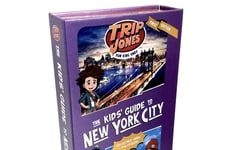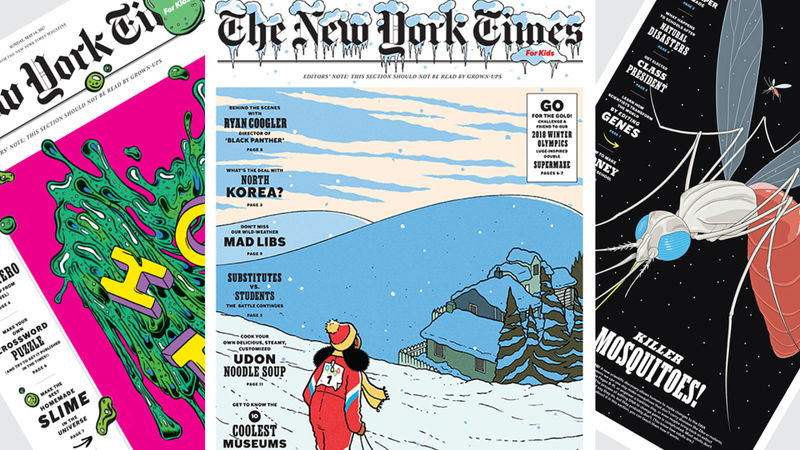
The New York Times Kids Edition is Set to Be a Permanent Staple
Joey Haar — January 26, 2018 — Pop Culture
References: nytimes & fastcodesign
The New York Times is a venerable institution, notable in recent years not only for its reporting but for its success as one of the few traditional papers to thrive despite the changing habits of internet-inured modern readers, and New York Times kids edition shows the creative risks that the paper is willing to take in solidifying the loyalty of its readership. The special edition paper, which is set for release this Sunday, is designed specifically for children, including a tongue-in-cheek warning on the front page: "This section should not be read by grown-ups."
The New York Times kids edition is geared toward kids in every facet. Its front page includes an illustration depicting a girl sledding, it includes a funnies page with jokes about embarrassing mishaps in the classroom, and it even includes opinion blurbs from real kids around the US. The special edition will be a regular feature of the Times from now on, occurring on the last Sunday of every month.
The New York Times kids edition is geared toward kids in every facet. Its front page includes an illustration depicting a girl sledding, it includes a funnies page with jokes about embarrassing mishaps in the classroom, and it even includes opinion blurbs from real kids around the US. The special edition will be a regular feature of the Times from now on, occurring on the last Sunday of every month.
Trend Themes
1. Kid-centric News Media - The rise of kid-centric news media provides opportunities for innovative formats like interactive books and audio podcasts which cater to young minds, creating engaging and educational content.
2. Subscription Boxes for Kids - A subscription box model for kids, delivering curated news, activities and games, could prove to be an effective way to engage young readers and extend their interest beyond the newspaper format.
3. AI-powered Storytelling for Kids - AI-powered storytelling tools that incorporate interactive features and augmented reality could create immersive educational experiences that draw kids in, making news more engaging and accessible.
Industry Implications
1. Publishing - Publishing companies can leverage existing content to create engaging, educational content for younger readers, engaged via interactive elements like audio and visual tools.
2. Entertainment/technology - Companies in the entertainment and technology space can produce kid-centric educational experiences, simulating the real world and encouraging empathy, thereby creating innovative educational tools for kids.
3. Education - Education professionals can work on creating interactive and age-appropriate content for children to ensure that they become informed and critical thinkers who are engaged and interested in the world around them.
4.6
Score
Popularity
Activity
Freshness























